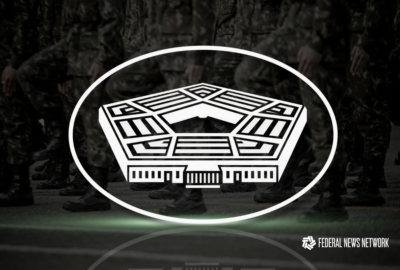
INSIGHT BY RED HAT
Enabling the cyber workforce through the Open Organization
As the cyber workforce is stretched thin, the Open Organization model can help achieve the flexibility and innovation needed to address complex challenges.
This content is provided by Red Hat
Organizations, especially those in government and the military, find it difficult to recruit and retain the skilled professionals needed to counter growing threats to the nation’s information infrastructure. This workforce operates in a setting in which threats are continuously evolving. At the same time, missions and business processes are being disrupted by technological, social and economic forces.
Meeting the challenges of this environment requires new tools and new ways of thinking. Cyber professionals must not only be trained with the proper skill sets, they must be empowered and motivated to move beyond traditional role-based jobs to concentrate on mission-focused outcomes.
“As we see military shift to knowledge-based roles, leaders have to recognize that managing knowledge workers is fundamentally different from managing industrial-era roles,” said Shawn Wells, chief security strategist for Red Had North America public sector.
Enabling inclusion and collaboration in cyber readiness not only expands the available pool of critical talent, it results in a more nimble and innovative organization. Businesses such as Red Hat and military groups such as the Army’s Cyber School at Fort Gordon, Georgia, are successfully applying the Open Organization model in their training and organization to get the flexibility and innovation needed to meet today’s challenges.
New challenges, new demands
As warfare expands from the physical domains to the cyber, cyber professionals must expand skill sets to include multiple disciplines. Working knowledge must cross crosses organizational lines to include non-technical areas such as finance, analytics and human resources to provide the visibility, collaboration and flexibility needed to address the complete spectrum of threats.
Today’s knowledge workers also have new expectations of their jobs. “We have found that career advancement is no longer a primary goal” for these workers, Wells said. “The work itself and the technological challenges are the chief rewards.”
Addressing threats and meeting expectations means changing the way organizations operate and how jobs are viewed. Instead of the traditional top-down command-and-control environment, workers must be motivated by work that is meaningful and that has an impact on mission outcome. To achieve this, workers must have a clear view of the goals of the projects they are working, be able to make contributions on and feel accountable for their contributions. This requires a level of transparency and collaboration in which ability and not rank is the defining factor.
New answers with an Open Organization
Open source software, which challenged traditional assumptions of software development by allowing teams to focus on goals rather than repetitive coding, provides a model for the needed organizational change. This change is expressed in the Open Organization.
Opensource.com defines the Open Organization as a way for groups and teams to work toward shared goals with greater agility, innovation and engagement. According to the definition, “Open organizations take many shapes. Their sizes, compositions, and the missions, vary. But the following five characteristics are the hallmarks of any open organization:
- Transparency
- Inclusivity
- Adaptability
- Collaboration
- Community
Successfully adopting these characteristics gives individuals better access to the resources and information needed to respond to rapidly evolving needs, empowering and motivating them, Wells said. Allowing each member to understand the goals of the team and see the results of their work, rather than focusing on a single job, provides a sense of mission.
Change requires support from the upper levels of an organization, but implementing it often begins at the bottom.
Shifting paradigms
Army brass understand the need for change in approaching cyber readiness, Wells said. That change is being implemented with soldiers as they enter the Army’s Cyber School, immediately after boot camp. Students have a complete view of each project and are empowered to contribute at every phase. Performance replaces rank as the arbiter of value.
“The culture for Army cyber is being closely aligned to mission, much like special operations,” Wells said.
The federal government traditionally evaluates cyber readiness with scorecards, and agency performance is posted on Web dashboards. This has the advantage of allowing agency performance to be tracked over time and compared, but it does not accurately reflect cybersecurity status.
The Open Organization model, which focuses on goals and emphasizes transparency and accountability, allows outcome and performance to be evaluated. Just as important, it promotes learning by accepting failure as a part of innovative programs. Failure is not a goal of any project, of course, but allowing failure and embracing the opportunity to learn from it allows open organizations to operate quickly, to innovate and to build on success rather than repeat mistakes.
To learn more about the Open Organization model, visit here.
Copyright © 2025 Federal News Network. All rights reserved. This website is not intended for users located within the European Economic Area.
Related Stories




